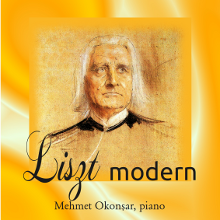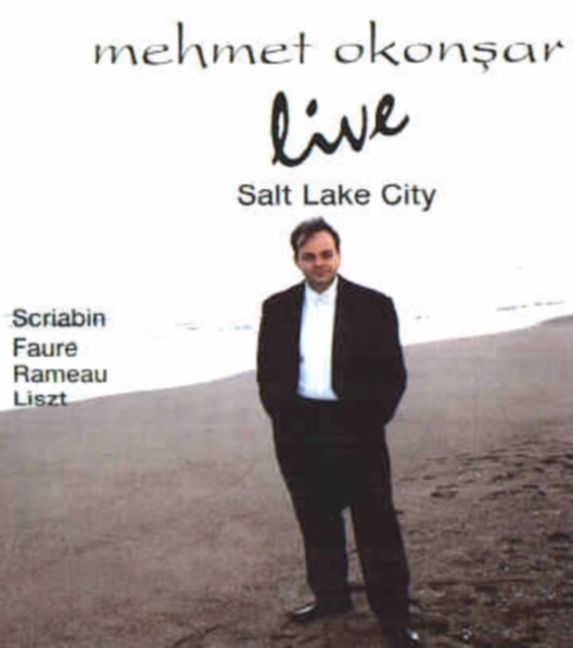
Structuralism And Post-Structuralism In Brief
An
overview of the Structuralism and post-Structuralism that followed.

J.S. Bach "Musikalische Opfer"



Recital: "Live at Salt Lake City"

J.S. Bach The Goldberg Variations

Piano Solo Improvisations: "Shadowy Arcade"
All CD's can be auditioned entirely and freely at their respective pages. Click on the images.

J.S. Bach The Goldberg Variations

Piano Solo Improvisations: "Shadowy Arcade"
All CD's can be auditioned entirely and freely at their respective pages. Click on the images.
It is mainly searching at how verbal expressions are used on context to produce a pattern of meaning, this is instead of the historic etymological approach. So that it requires a "diagonal" (cross) sectional method of investigation of the particular language as opposed to a "straight-line" (longitudinal) one.
Structuralism can also be on "what people do", disregarding what causes them to do that.
It cannot inform us why we behave this particular way, it simply targets to analyze the particular behavior that is occurring.
This method for analyzing and understanding common behavioral patterns targets typical, standard, universal designs of behavior.
It informs us that "this is one way people, or at best a subgroup of that people we are examining, reacts in most of these situations. For those who have that type of information on the "structure" of the group's behavior, in a few contexts, you will be able to make good forecasts on what may happen later on. But this method does not explain why we have seen the particular behavior we have seen.
It is, in addition, a technique for human sciences that tries to evaluate a particular field such as the mythology like a complex system of related parts.
It started in linguistics using the work of Ferdinand de Saussure. However, many French intellectuals perceived it to possess a wider application, and also the model was soon modified and put on other fields, for example anthropology, psychoanalysis and literary theory. This created within the beginnings of structuralism a wide intellectual movement that was going to take "French" existentialism's stand within the 1960's.
Structuralism is frequently belittled for its inability to prove something through usual hypothesis testing and validation methods.
Strauss makes unprovable presumptions about humans, and for many people the idea of universal structures is hard to embrace. Structuralism also is commonly a-historic, thus not explaining the way in which history effects the current time.
The value of structuralism in the literary world is to check out every aspect of that work of literature. A structuralist would not just take a look at one phrase but all phrases within "The Yellow Wallpaper" for instance.
The structuralist may scrutinize the structure of "A mans role within the female role" or "energy over weakness." If you take each particular motif from the story, their structures and flip them, more motifs would develop which would enable for the origin of the systems (structures) inside the text(s) to become analyzable.
In "The Yellow Wallpaper" the systems (structures) and binaries (the sup and sub-structures) inside the text indicate the foundation of the author's own encounters while as being a patient throughout the Victorian times. This understanding of Charlotte Gilman's existence helps you to evaluate much more structures without focusing mainly about the text and it is plot.
The theme of mathematical structuralism is the fact that what matters to some mathematical theory is not the internal characteristics of their objects, for example points, numbers, sets or functions, but exactly how those individuals objects connect with one another.
In this way, the thesis is the fact that mathematical objects only have no intrinsic character.
Structuralism based itself most particularly on advances within mathematics towards the finish of the nineteenth century, as well as on the program for supplying a categorical foundation to mathematics.
Because the political turbulences from the sixties and seventies and specially the student uprisings of May 1968 started affecting academia; particular issues of domination and political struggle have been brought to individuals' attention. The ethnologist Robert Jaulin identified a different ethnological approach which in turn obviously pitted itself in opposition to structuralism.
Today, structuralism is less popular than post-structuralism and deconstruction. You will find a lot of reasons for this.
Structuralism has frequently been belittled to be "a-historic" and for favoring deterministic structurel causes more than ability of people to take action.
Post-Structuralism is really a late twentieth century movement in philosophy and literary critique, tough to sum up yet which typically identifies by itself within the challenge in the direction of the widely accepted Structuralism movement which preceded it in nineteen fifties and sixties France. It's carefully related to Post-Modernism, even though two concepts are not synonymous.
Post-structuralism describes an extremely heterogeneous and large amount of ideas that came after the structuralism. They are expressed by the philosophers Jacques Derrida, the particular sociologist and philosopher Michel Foucault, the psychoanalyst Jacques Lacan, J. F. Lyotard and many more.
Broadly post-structuralists build about the experience of structuralism. Particularly on its inclination to to determine conventional and natural ideas about language, history, society as covering over structures and procedures that must be understood using ideas that appeared to contradict the "common-sense" world.
I believe the central insight of post-structuralism was that there are not any supreme guarantor associated with significance, basically no "transcendental signifier" that will seem sensible for all things: meaning is definitely elsewhere. As whenever, for instance, you take a look at a dictionary, there is no "original" word that guarantees the understanding of all other definitions.
Usage rights:
You can use
this article under the Creative Commons License CC-BY. This license
lets you distribute, remix, tweak, and build upon my work, even
commercially, as long as you credit me, by displaying the information
on me given below verbatim for
the original article.
Mehmet
Okonsar is a
pianist-composer-conductor and musicologist. Besides his international
concert carrier he is a prolific writer. Founder of the first classical
music-musicology dedicated blog-site: "inventor-musicae"
as well as the first classical-music video portal: "classical videos".
